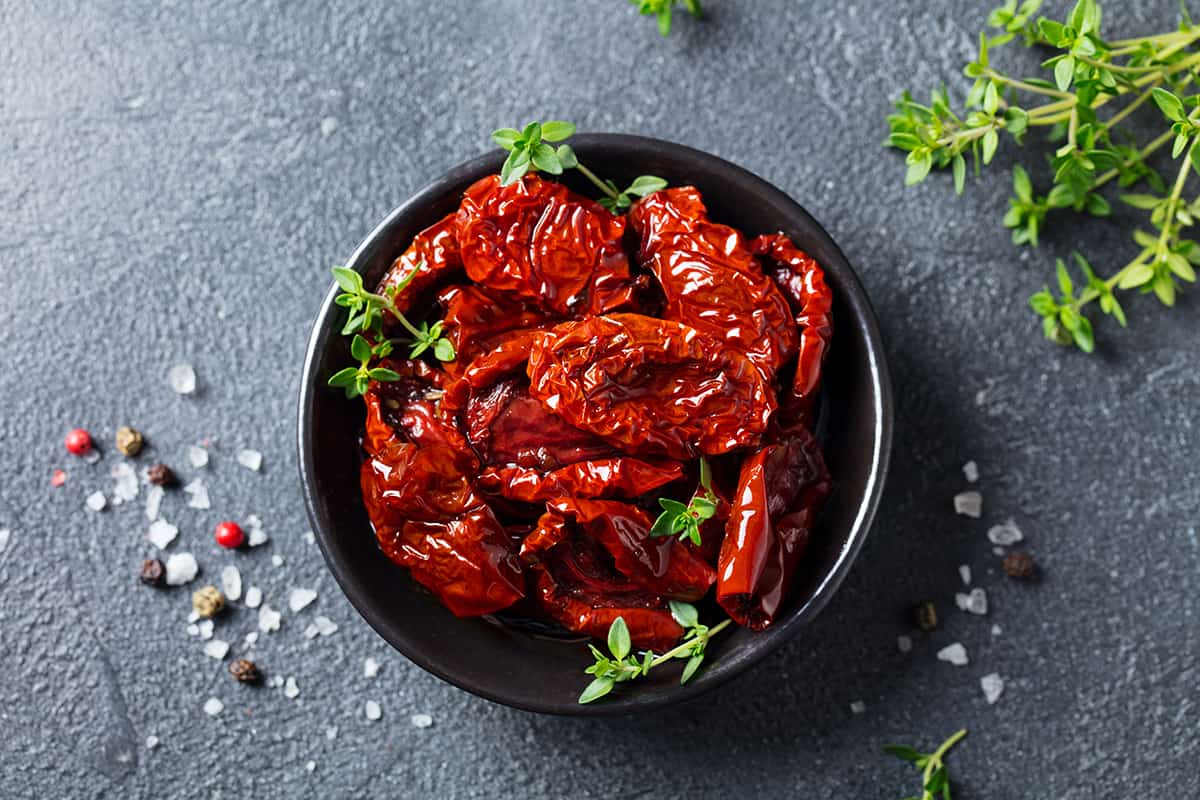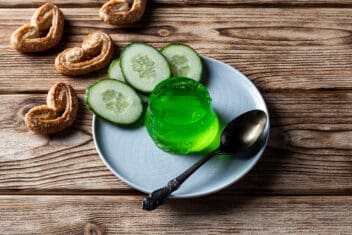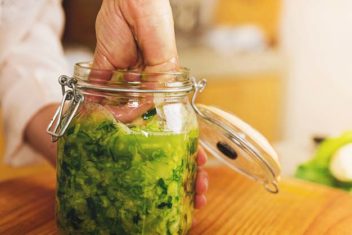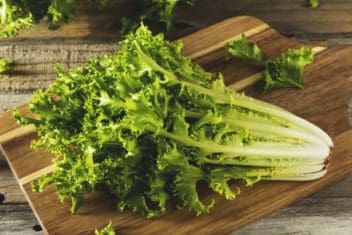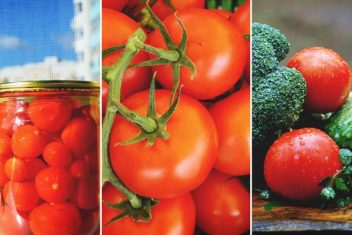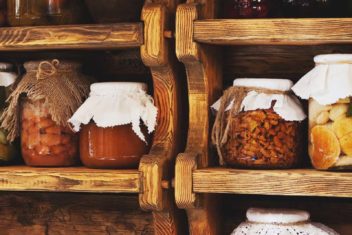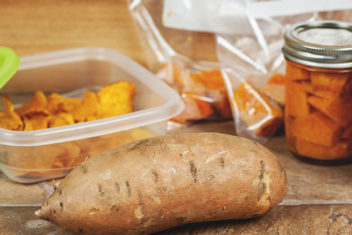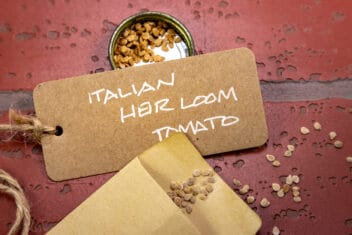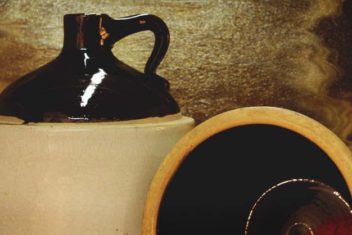Tomatoes are some of the most luscious gifts that summer offers us. Whether you’re growing tiny cherry tomatoes or enormous beefsteak varieties, you won’t want to waste a single morsel. Here are some of the best and most delicious ways for you to preserve your next tomato harvest.
1. Sun Dried Tomatoes
This is one of the easiest ways to preserve your cherry or grape tomatoes (and also one of the tastiest).
Once you’ve harvested a big crop, slice your tomatoes in halves or thirds and spread them out onto drying racks. Alternatively, if you don’t have drying racks, you can use clean window screens, or even lengths of cotton, linen, or burlap fabric.
Choose a hot, sunny day and spread these out on a flat, clean surface. If there are a lot of insects around, you may need to rig up some floating row covers over them to fend the little buggers off. Then let the sun and wind work their magic to dry these out. It may take a few days for them to dry out almost completely, so check the weather to make sure you’ve got a multi-day hot spell ahead to make this magic happen.
Once they’re dry, you can either store them in airtight jars or pack them into olive oil that you’ve seasoned with some salt, pepper, basil, oregano, and garlic.
2. Dehydrated Tomato Slices
This technique is similar to the sun-dried party mentioned above, only you’re using a dehydrator instead of the sun. Considering how erratic autumn weather can be, this is a great way to ensure that your tomato slices will dry evenly, and on time. You can also preserve larger tomatoes by slicing them thinly and spreading them out to dry.
If you haven’t tried tomato chips yet, you may want to try them out! You’ll need to use slightly under-ripe tomatoes so they’re still quite firm, and use a mandolin slicer to get them to a uniform 1/4 inch thickness.
Use olive oil to grease your dehydrator trays before laying out the slices. Then sprinkle them with your seasonings of choice. I like to use a mixture of sea salt, garlic powder, and onion powder. Dehydrate these at 125°F/52°C for about 10 hours, or until they snap easily when bent.
Store whatever you don’t wolf down immediately in airtight glass jars.
3. Canned Whole (Peeled) Tomatoes
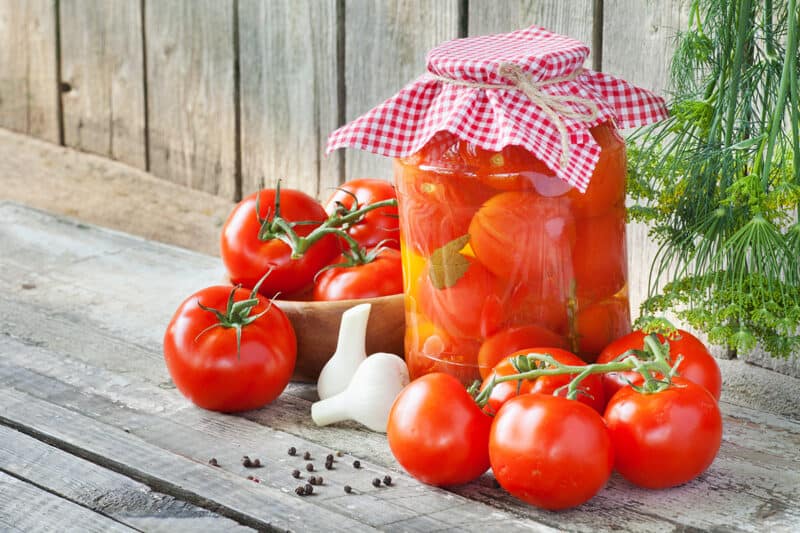
This is my favorite way to preserve tomatoes, as it maintains their summer sweetness and flavor the best.
Use a sharp knife to cut an X shape into the bottom of each tomato, and remove any stems. Then use a slotted spoon to blanch each cut fruit by immersing it into rapidly boiling water for about 30 seconds. Plop these into the sink or into a bowl to cool briefly, and then peel their skins off.
Use a corer or sharp knife to cut their cores out, and then either pack them into quart-sized jars whole, halved, or quartered.
Use a wooden spoon (and/or its handle) to mush them into the jars until they’ve created quite a bit of juice, with 1/2 inch of headspace. Add 1tsp of salt to each jar, then put the two-part metal lids on. Process in a boiling water bath for 30 to 40 minutes and then store in your pantry for up to a year.
4. Diced and Spiced Tomatoes
Use the same technique mentioned above to remove the peels from your tomatoes. Then dice them and toss them into a large pot on medium heat. Season these tomatoes to your tastes with whatever herbs and spices you prefer. If you tend to cook a lot of Italian food, use salt, pepper, basil, oregano, onion, and garlic. Swap out the basil and oregano for cumin and chili if you prefer Mexican food, or coriander and garam masala blend for Indian food.
Cook for about 10 minutes. Squirt about 1/2 tsp of lemon juice (or a bit of citric acid) into the bottom of each of your quart jars, and then ladle the tomato mixture into the jars while hot, leaving 1/2 inch of headspace. Screw on the two-part lids and process for 30 minutes in a boiling water bath.
5. Pasta Sauce
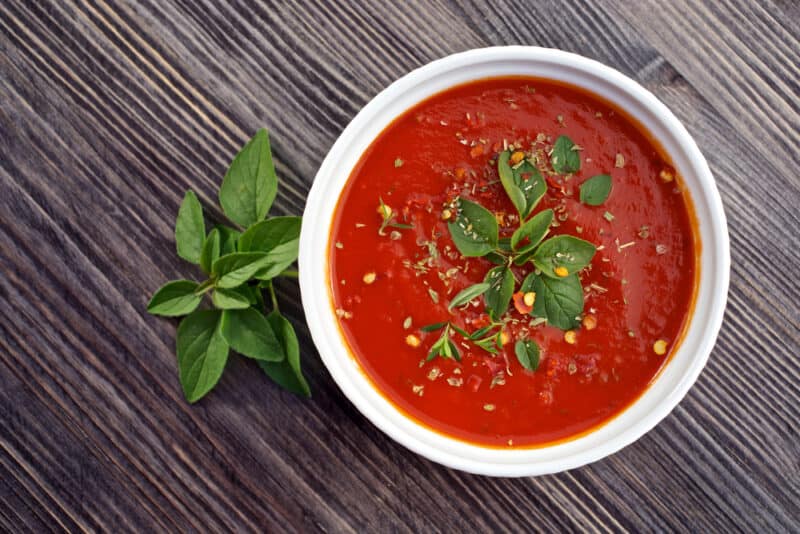
Use the same process as above, only prepare your favorite pasta sauce recipe instead of simple diced tomatoes. This means that you can add onions, peppers, mushrooms… whatever your heart desires. Just don’t add dairy to it.
You should also add a bit more lemon juice or citric acid powder to increase the acidity if you’ve added low-acid items like those mentioned above. Then process as you would the diced and spiced tomatoes.
6. Salsa
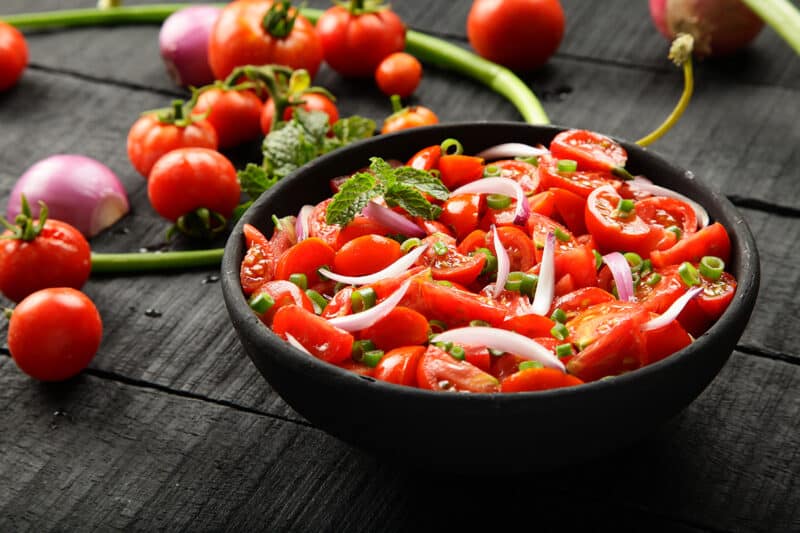
Once again, you’ll follow the same process as the two previous. Only this time, you’ve gone full-tilt into salsa land.
Since most salsas require either lemon or lime juice, you should have a mixture that’s acidic enough for a boiling water bath rather than a pressure canner. Just refrain from adding really low-acid items like black beans or corn to the mixture and you should be fine.
In fact, you should only use 3 cups of added veggies for every 22 lbs of tomatoes. Any more than that and you’ll reduce the tomatoes’ acidity too much to be canned safely.
After you’ve ladled your salsa into jars, process them in a boiling water bath for 30 minutes.
7. Soup
Now, tomato soup can be a bit tricky when it comes to trying to preserve extra tomatoes.
This is because most tomato soup recipes call for additives like corn starch, wheat flour, or dairy to thicken the liquid. None of these can be canned safely for long-term storage, even if you’re using a pressure canner. As a result, the best way to make a thick, hearty tomato soup is to use Roma (paste) tomatoes, and then boil the soup down a bit so it condenses.
Then you can ladle it into clean, sterilized jars and water bath can for 35 to 40 minutes.
8. Paste
Take a few dozen fresh tomatoes, and skin/seed them via the method mentioned above. Then chop them and toss them into a pot with 3 chopped red peppers, a few cloves of minced garlic, and 1/2 an onion (also chopped), 1 to 1-1/5 tsp salt, some cracked pepper, and your choice of herbs (optional). Bring to boil, then reduce to a simmer for about half an hour.
Remove from heat and puree thoroughly in a blender, or with a hand blender. Some people pass it through a sieve at this point but I like my paste chunky.
Transfer this puree to a crockpot or slow cooker. Keep it on high heat for an hour, then reduce to low. Stir this once an hour or so, and let it reduce until it’s thick enough to cling to a spoon when you pass it through. Think pudding or cooled oatmeal.
Grab your clean, sterile jars, and add 1tsp of lemon juice into every half-pint jar, or 2tsp into pint-sized ones. Use a funnel and ladle to transfer the paste in, leaving 1/2 inch headspace. Pop on the lids and process in a boiling water bath for 45 min.
9. Ketchup
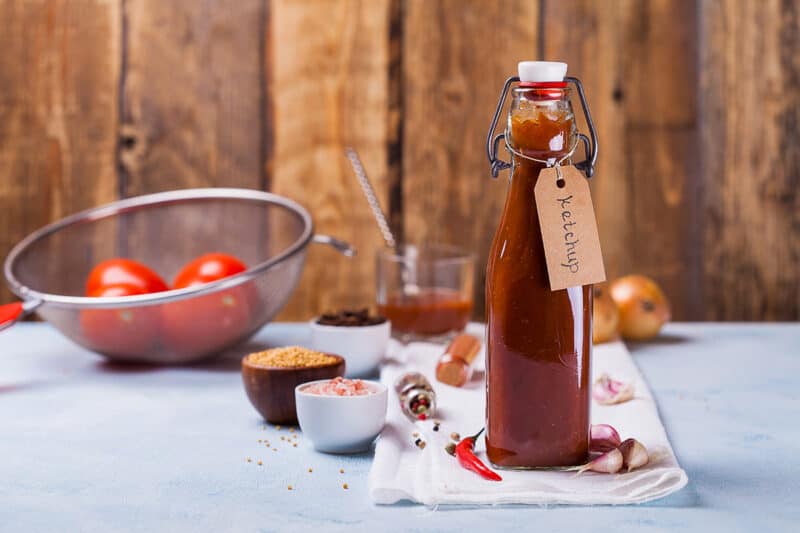
Did you know that ketchup tastes different in Canada than in the USA? It’s true! Ketchup is sweeter in the Great White North and saltier in the States. As a result, it’s important for you to try out a few different homemade ketchup recipes to determine which you like best.
No matter which you choose, it’s an excellent way to preserve tomatoes for later.
Once you’ve stumbled upon a winner, you’re good to go. Make a big batch of it and transfer it into clean, sterile jars with about 1/2 inch headspace. Then pop on the lids and process in a hot water bath for 20–25 minutes.
10. Tomato Jam
If you like ketchup, then chances are you’ll like tomato jam as well. Most people only use tomatoes in savory dishes, but it makes a startlingly good jam. Think of how sweet tomatoes are right off the vine, and then think of how gorgeous that’ll be spread on toast or bagels with cream cheese and chives.
Much like with ketchup, it’s good to experiment with different jam recipes until you find one that you really like. Some people like to add cloves to theirs, others like cumin… or perhaps you’d like to roast your tomatoes with balsamic before making jam. Get creative!
Once you’ve got a great batch done, transfer it into clean, sterile 1/2 pint jars with 1/4 inch headspace. Once the lids are on, process in a boiling water bath for 10–15 minutes.
11. Leather
There are a couple of different types of dehydrated tomato “leather” that you can make. One is a simple, unseasoned puree that you can add to all kinds of dishes. The other is more like what 18th-century travelers would call “dried soup”.
Blanch, peel, and seed approximately six pounds of tomatoes. Then toss them into a blender, or a large pot if you’re using an immersion blender. You should have approximately 4 cups of liquid puree. Then, add 1tsp of honey or 1.5 tsp sugar, as well as 1/2tsp lemon juice. Add salt and garlic powder to taste, as well as any other herbs you’d like.
Then spread this puree on fruit leather sheets that fit your electric dehydrator. Set it to 135°F for 9 hours, and then check to see if it needs more time. Alternatively, if you’re using an oven instead of an electric dehydrator, spray baking sheets with cooking oil and then spread the puree on them. Set your oven to around 150°F and dehydrate for 6 or so hours, with the door open to the first notch.
This will create a chewy, savory-sweet tomato leather. You can either snack on it as is, or tear up bits and toss them into soup. If you’d prefer to just have a sweet snack instead of instant soup mix, then omit the salt and garlic and add more sugar or honey instead.
12. Pickled Cherry Tomatoes

Have you ever had a massive bounty of cherry or grape tomatoes at the end of the harvest season? One great way to preserve your tomatoes is by pickling them. I like to use a mixture of yellow, orange, and red mini tomatoes because they look so beautiful in their jars.
Wash and sterilize a couple of pint-sized canning jars. Then pop a small garlic clove (or half a large one) into each jar, along with a sprig of thyme or summer savory, and a couple of peppercorns. If you’d like some heat, add some red pepper flakes or a thin slice of jalapeno pepper too. Wash and dry your tomatoes thoroughly, and then use a toothpick or skewer to poke a hole through each of them. This will allow the pickling juice to seep into them. Then divide them into jars.
Create a basic brine with 1 1/2 cups white vinegar (5%, not pickling vinegar), 1 cup of water, 1/4 cup sugar, and 1.5 tablespoons salt. Bring this to a boil, stirring well to make sure everything is dissolved, then remove from the heat and allow to cool for a few minutes.
Use a funnel and ladle to transfer this liquid into the jars, leaving 1/3 inch of headspace. Use a chopstick to move the tomatoes around a bit to release any air bubbles. Then wipe off the rims, put on the lids, and process in a hot water canning bath for 15 minutes.
Alternatively, you can omit the water bath canning and leave these as “quick pickles”. They’ll need to be stored in the refrigerator and eaten within 2 months, but will be just as delicious.
13. Tomato Juice
Now, some people make their tomato juice by simmering fresh tomatoes in water and then pureeing them and pushing them through a sieve. I go an easier route and use a juicer instead, and highly recommend that option instead. Using a juicer also allows you to add other vegetables (and therefore more flavors) easily. Even better, this is a great way to preserve tomatoes’ fresh flavor in a different form than standard sauce or salsa.
For a basic tomato juice, grab all the tomatoes you have around you and put them through your juicer. When you’re about halfway through, you can add a tiny bit of raw onion or garlic (if you’re making a savory or spicy juice), and then process the rest of the tomatoes. Omit if you’re going for sweet juice instead.
Once you have all that glorious juice, pour it into a large cooking pot and bring the heat up to a low boil. Reduce to a simmer and cook for about 10-15 minutes. At this point, you’ll want to flavor the juice to taste. For sweet juice, you can add a bit of sugar or honey. In contrast, savory juices benefit from garlic and onion powder, salt, hot pepper flakes, or hot sauce: your call.
Then, take your washed and sterilized jars and pour some lemon juice into each of them. Aim for 2 tbsp for quart-sized jars, or 1tbsp in the pint-sized ones. Ladle the hot juice into the jars, leaving about 1/2 inch of headspace. Put the lids on and process in a boiling water bath for 45 minutes.
14. Frozen Extras
The worst freezing mistake I ever made was just popping a bag of cherry tomatoes into the freezer “for later.” I was 22 and it didn’t occur to me that they would all mash together into a red, Eldritch horror.
Don’t do this. That’s the wrong way to preserve tomatoes in the freezer.
Spray a couple of muffin tins with cooking oil and place a cherry tomato or large chunk of peeled tomato into each section. Freeze overnight, or until firm to the touch. Then transfer those babies into freezer bags and label them clearly with the date you’ve added them. Repeat this process until all your leftovers are frozen. You’ll be able to pick out as much as you need without the need to bash anything with a hammer, crying hysterically.
You can also use this muffin tin method to freeze small amounts of tomato paste, sauce, etc. Just grease each section good and proper before ladling in the liquid. Once it’s all frozen, pop the little pucks out and transfer them to freezer bags.
15. Tomato Powder
When all else fails, pulverize it. Seriously, consider how often you cook with ingredients like garlic powder, onion powder, and similar seasonings. Tomato powder is easy to make, can be stored for ages, and is incredibly versatile. Incorporate it into dishes to add bursts of flavor, or into drinks to add a tangy zip of extra vitamin C.
Use the same method mentioned earlier for dehydrating tomato slices. Once the slices are crisp and easily broken in half, grind them into powder with an electric coffee grinder. Alternatively, you can use a mortar and pestle if you’ve been watching a ton of Outlander and want to get into that spirit.
You can leave this powder as it is, or season it up. Consider blending it with a bit of salt, garlic powder, paprika, and Mediterranean spices. This makes a great rub for various dishes and is also great to shake or spoon into stews and sauces. You can even just mix it into hot water for an instant soup-type drink.
Are you inspired to preserve tomatoes as soon as possible? All of these options can be adapted to suit individual tastes, and have several different applications. Experiment with flavor combinations and don’t let a single morsel of your glorious tomato harvest go to waste.
